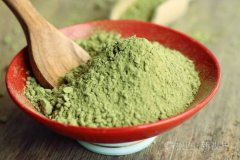What is the processing difference of Pu'er raw tea? what are the quality characteristics of Pu'er tea?
Pu'er tea (also known as "black tea" or "black tea" in China) is a kind of semi-rare tea produced in Yunnan, China. In the West, Pu'er tea is famous for its health benefits, but there are many misunderstandings about its flavor, processing and other characteristics. Read on to learn more about this mysterious and often misunderstood tea.
A little knowledge of Pu'er tea
Origin: Yunnan Province, China
Alias: black tea, "black tea"
Temperature: 91 degrees Celsius
Caffeine: 60-70 mg per cup
The taste of Pu'er tea
High-quality Pu'er tea has a deep, full-bodied flavor, which many people think is earthy or mushroom. Poor quality Pu'er tea often tastes muddy or moldy. High-quality Pu'er tea often attracts coffee lovers and goes with rich desserts. The flavor and well-known health benefits of Pu'er tea also make it a good choice for after-meal digestive drinks; in fact, in China and Hong Kong, people often eat it during or after eating greasy foods such as snacks.

If you don't like the taste of Pu'er tea itself, there are many mixed Pu'er teas on the market. Chrysanthemum Pu'er tea is a traditional Chinese mixed tea, which has a "clean" effect, but there are more "modern" mixed teas to choose from. For example, Lixin's Pu'er tea includes ginger Pu'er tea and vanilla mint Pu'er tea.
The Origin and History of Pu'er Tea
Pu'er originated thousands of years ago in Yunnan Province, China, where large-leaf tea trees grow. Its history is closely related to the tea trade in China and other countries (especially Xizang). Its name comes from the fact that tea was originally sold to towns in other countries (Pu'er City). Initially, in order to transport more efficiently, it was compressed into shape, and on the way to its final destination, it gained a dark color and taste as a result of natural fermentation.
Over the years, Pu'er has grown old. The aging process leads to slow fermentation, and it takes about 15 years for "unfermented" Pu'er tea to reach the color and taste of dark Pu'er tea desired by its drinkers. In the 1970s, a process called "cooking" was developed to speed up the fermentation process.
Longevity processing eventually led to the "bubble" of Pu'er tea collection / investment in the 1990s and early 21st century. During the Pu'er tea bubble, many fake Pu'er teas were made from leaves other than their traditional origin (Yunnan). As prices soared, many collectors began to hoard their old Pu'er tea, while the quality of new Pu'er tea declined sharply as production increased to meet demand. Fortunately, the Pu'er bubble burst and production returned to normal more or less.
Pu'er tea processing
Sheng Pu'er is made from the leaves of Yunnan big-leaf tea trees after minimal processing, then carefully aged under supervision and then eaten. This style of Pu'er usually takes 15 or 20 years to age, and can be aged longer to get a deeper, richer, smoother and more complex flavor.
Longevity treatment includes the application of heat and water, as well as inoculation of tea with beneficial bacteria. The harvested tea takes about a year to "mature" or "complete" Pu'er tea. Some "mature" Pu'er teas have also been aged and their taste is more similar to that of traditionally produced Pu'er tea.

The shape of Pu'er tea
One of the most prominent features of Pu'er tea is its various shapes. Pu'er usually has shapes, such as bricks, cakes (disc-shaped, also known as "iced tea") and Tuocha (shaped like a small bowl). These shapes facilitate the transportation and storage of Pu'er.
Pu'er tea can also be in bulk (like other bulk tea), or packaged in grapefruit or bamboo poles. There are occasional tea bags.
Important Notice :
前街咖啡 FrontStreet Coffee has moved to new addredd:
FrontStreet Coffee Address: 315,Donghua East Road,GuangZhou
Tel:020 38364473
- Prev

Which brand of pure Ceylon black tea tastes good the difference between highland tea and lowland tea
Ceylon black tea is a good choice for any beverage formula that requires ordinary black tea. Thai iced tea Hong Kong milk tea black tea vodka breakfast iced tea latte sweet Adlin: warm pomegranate and black tea drink Ceylon tea although some Sri Lankan producers are expanding their product range, including green tea and other types of tea, but most Ceylon tea is red
- Next

Why can't matcha powder be brewed in the right way to drink bitterness? Can matcha add honey to you get fat?
Matcha is a special shady green tea that is ground into a very fine powder. Instead of soaking the tea in hot water to extract the flavor, you stir the matcha powder in the water, so you are actually drinking tea. A serving of coffee is usually only 2 to 4 ounces and contains concentrated caffeine. It is also more delicious, delicious with rich plants, delicious, and luscious foam top. The technology of making matcha
Related
- Being chased out of the rain in front of Starbucks?! Store: Sheltering from rain under umbrellas poses a safety hazard
- The white moonlight has changed?! Lucky launches "Big Winter Pear American"
- Hand-brewed coffee three-stage method, high-sweet and universal brewing method to share! What does the high sweet water level of hand-brewed coffee mean?
- What is the difference between raw, refined and full espresso coffee? How to extract espresso and taste good?
- A complete list of coffee bean names and their meanings! What is Yejia Shefi coffee? Where is Mantelin coffee?
- What grade does Arida Manor Kaduai coffee beans belong to? What treatment is Arida ASD slow anaerobic sun exposure?
- The milk tea cup becomes smaller?! Overlord Tea Girl launches a new "Return to Yunnan" series
- Accused of selling counterfeit and high-priced coffee beans! Well-known boutique coffee brand "Oukelao" bowed and apologized!
- How to make espresso dumplings? Can I eat coffee and glutinous rice balls together?
- Save the unformed and stagnant powder cakes in one second! What is the problem with stagnant water in the powder bowl of the espresso machine?

